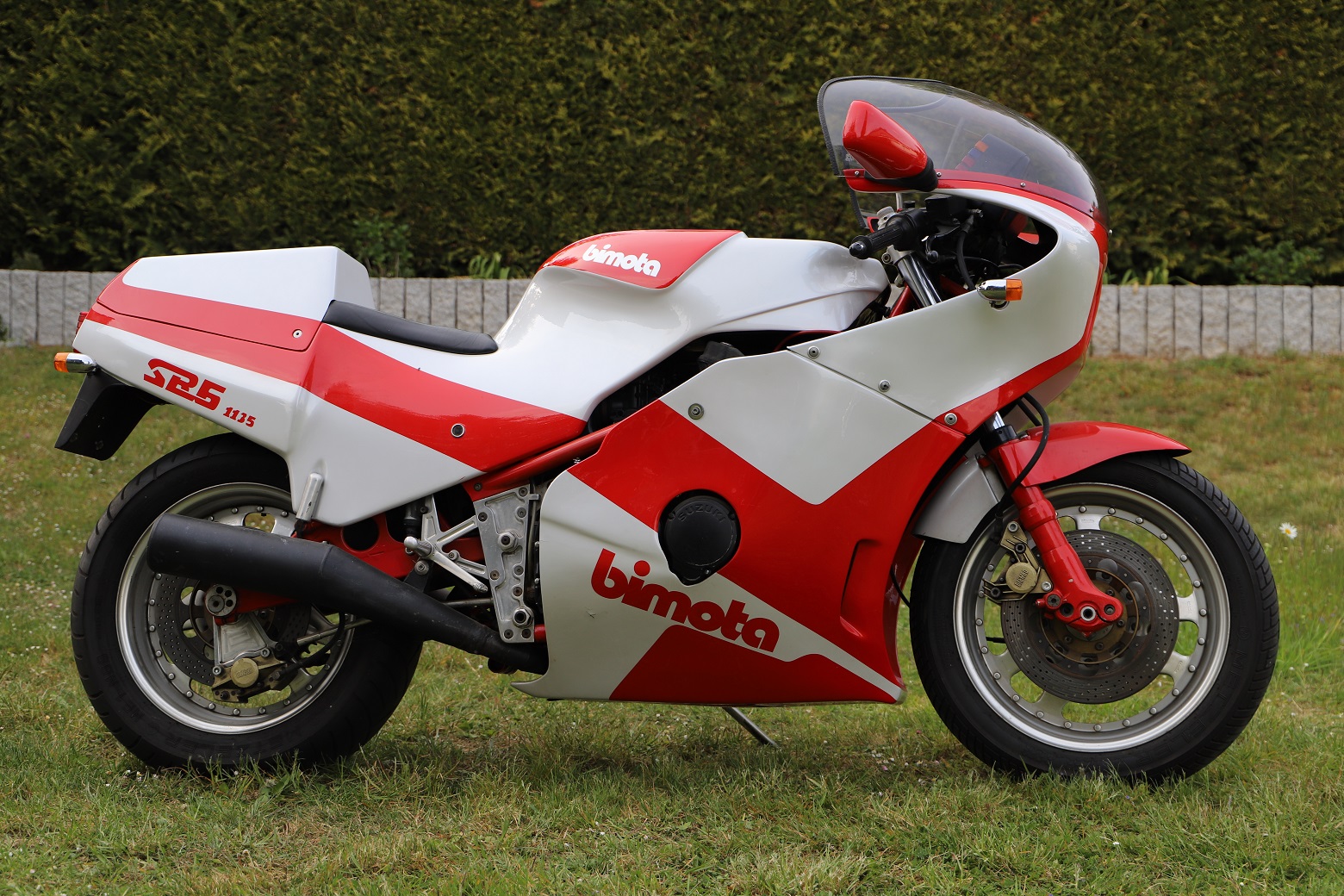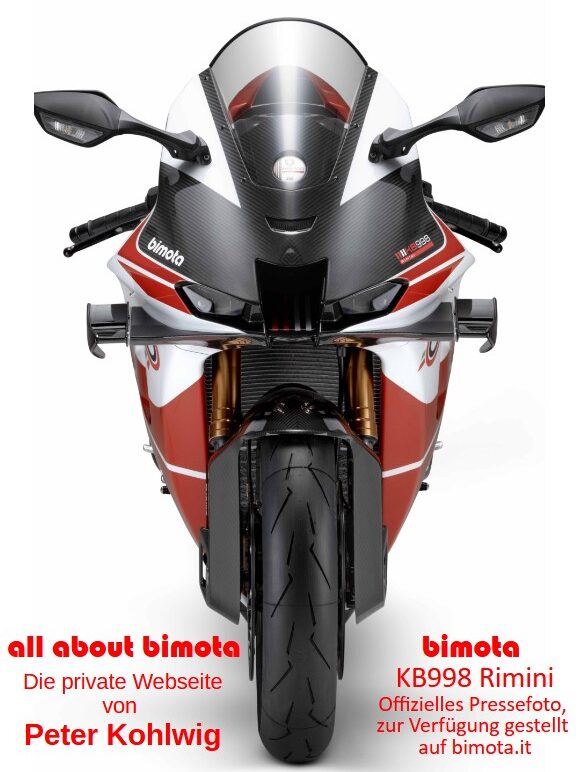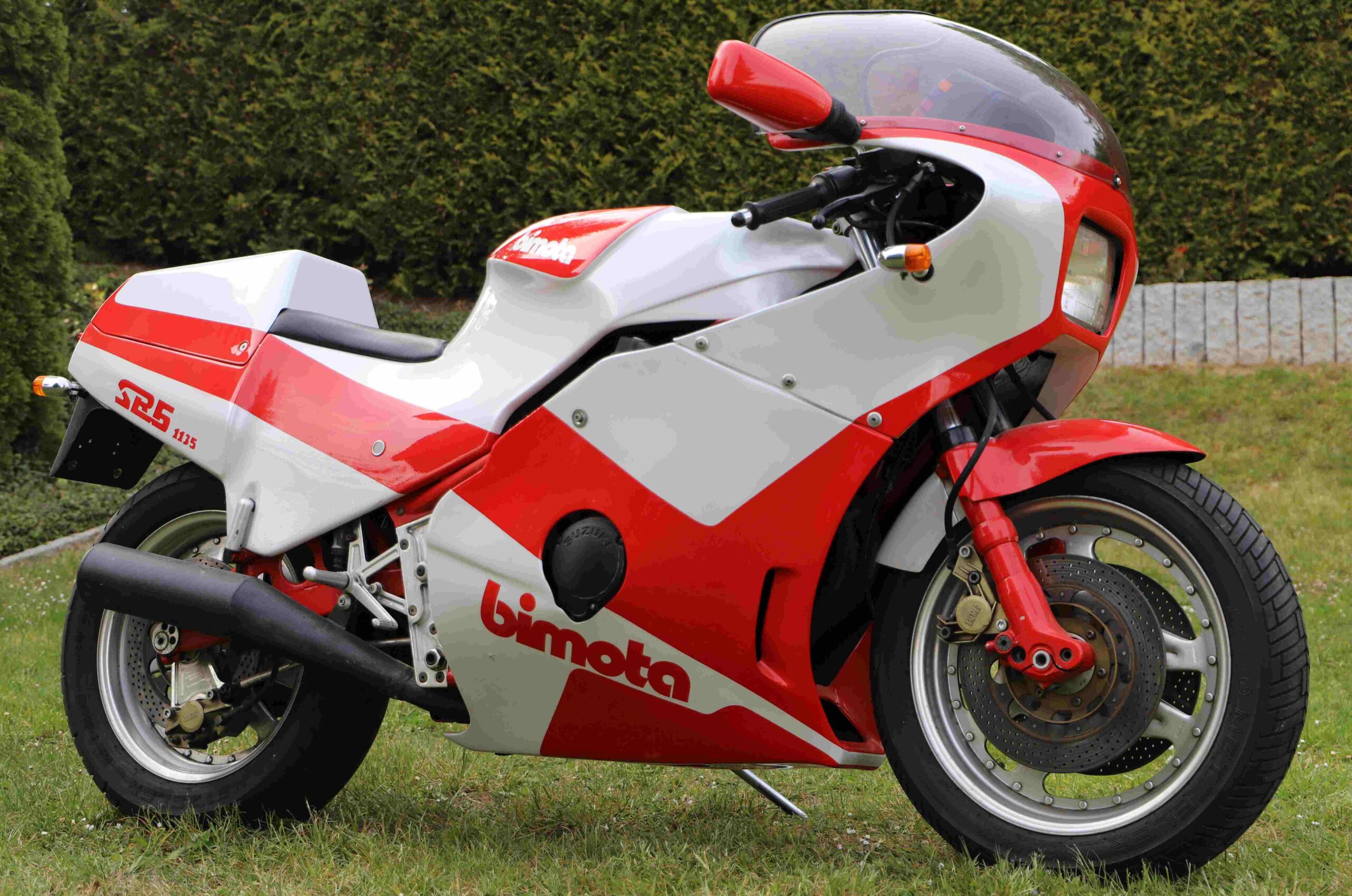
| Designer | Massimo Tamburini | First presentation | Cologne 1984 |
| Production period | 1985 – 1986 | Numbers produced | 158 thereof 71 kits |
| Power | 88 KW (120 PS) | Displacement | 1135 ccm |
| Topspeed | 255 km/h | Weight | wet 232 kg dry 219 kg |
| Price | 36.900 DM (1985) 24.890 DM as kit | Colours | white / red |
| Technical basis | Suzuki GSX 1100 EF |
With the SB5, Bimota introduces a model in 1985 that is designed exclusively as a two-seater from the outset. Compared to the SB4, the SB5 features a reinforced rear frame with welded mounts for the passenger footrests. In passenger operation, the weight distribution shifts significantly toward the rear wheel, which negatively impacts straight-line stability. To address this, the SB5 is equipped with a rear swingarm that is 5 centimeters longer than those of its single-seat siblings.
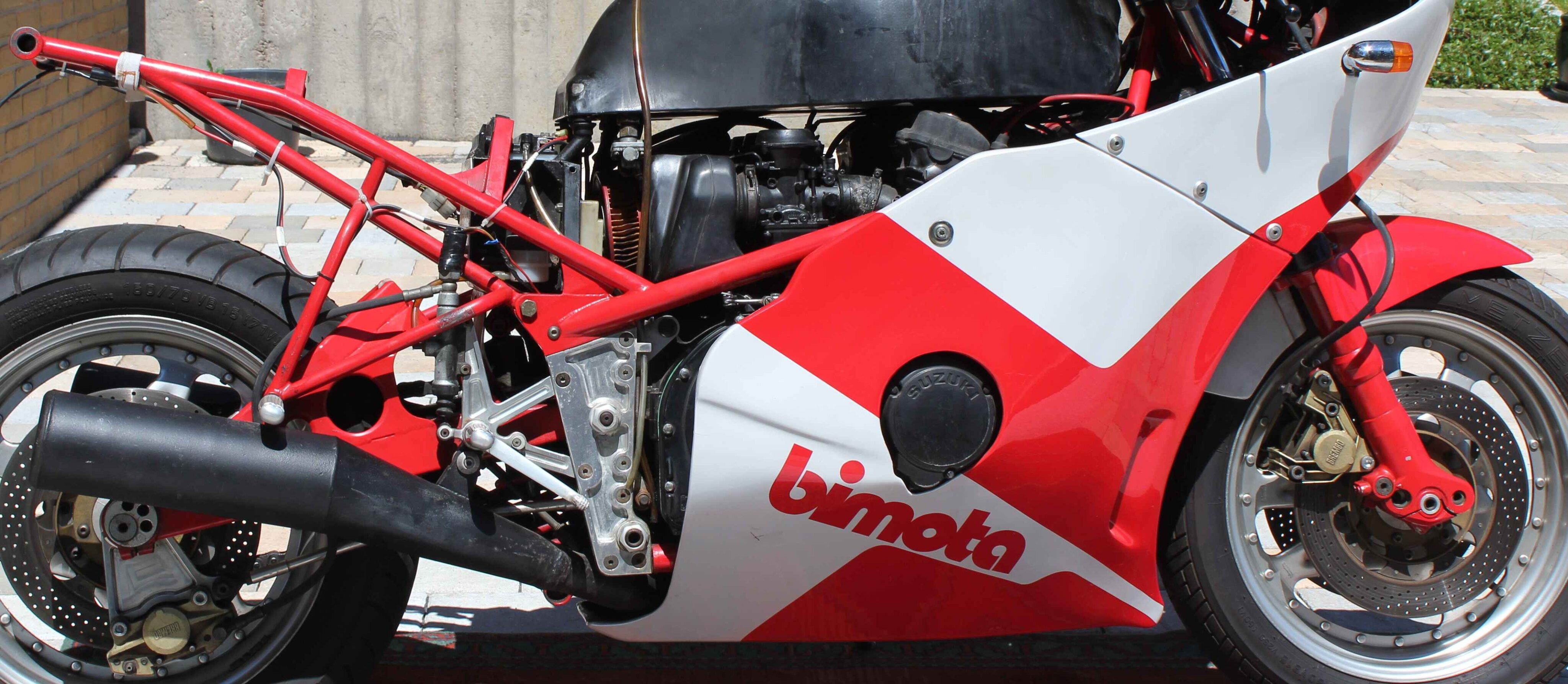
The previous monocoque design used in the HB2, HB3, KB3, and SB4 is also completely redesigned. The tank cover is no longer flat but now features flowing lines with subtle contours. The passenger seat can be covered with a cowl, giving the SB5 the option of appearing as a single-seater.
The motorcycle magazine mo, in issue 1/86, certifies the 1135cc engine of the Suzuki GSX 1100 EF an impressive 105 horsepower at the rear wheel and an incredible top speed of 264 km/h, making it the fastest road motorcycle in the world at the time. The air-cooled four-cylinder Suzuki engine, equipped with four valves per cylinder actuated via rocker arms, delivers an unrestricted output of 120 horsepower and achieves a torque of 108 Nm.
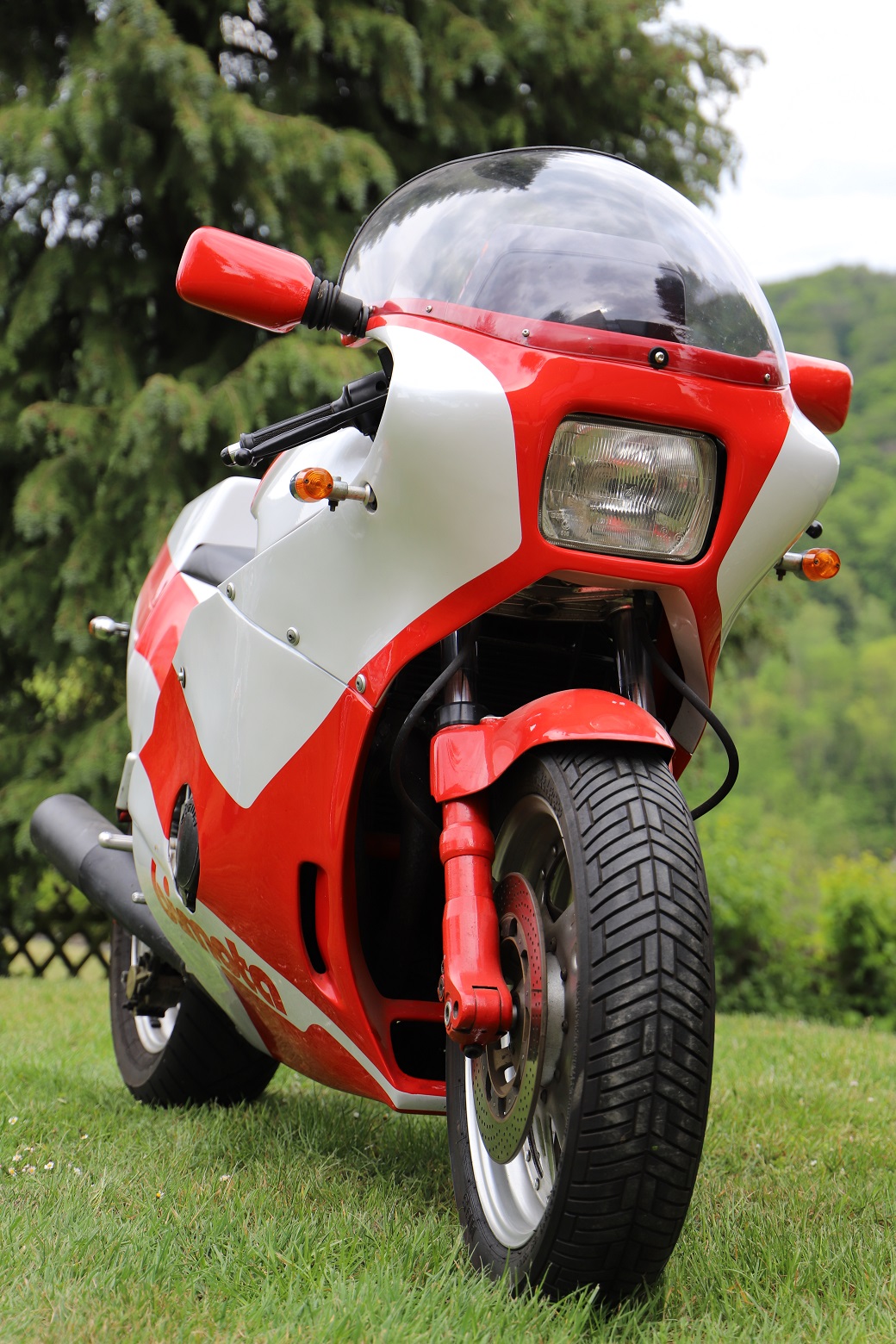
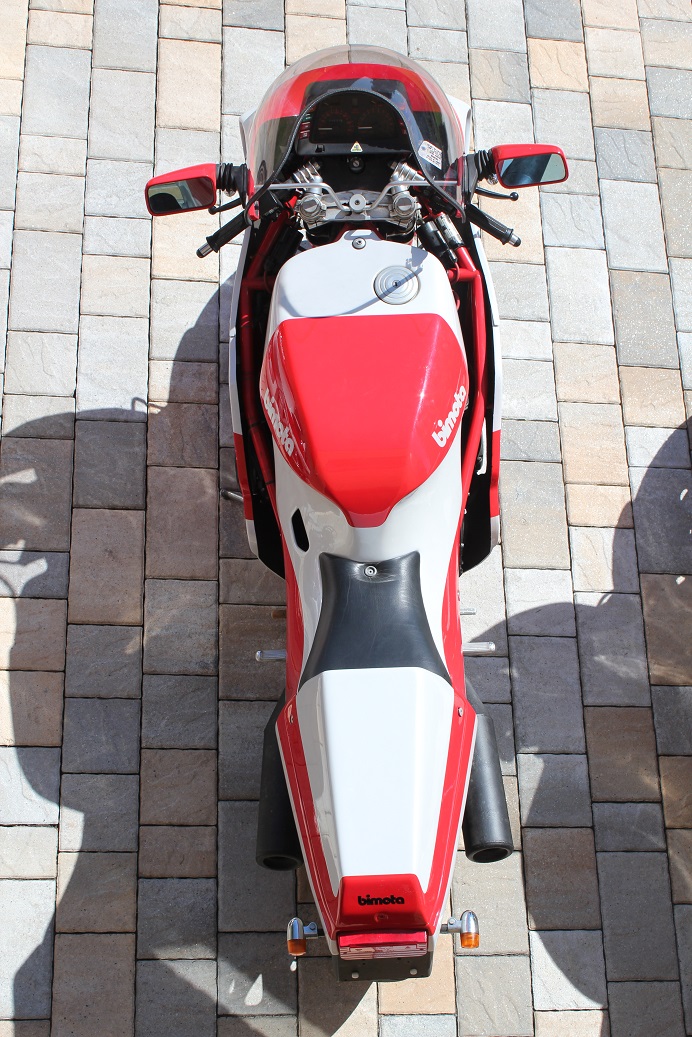
Alternatively, Bimota also offers the SB5 with the 1,063 cc engine from the GSX 1100 E or Katana, which is also used in the SB4. According to the price lists of the German importer Höly at the time, this variant was offered for DM 34,800.
In the 1980s, one of the key reasons for buying a Bimota increasingly comes into question. During this period, major motorcycle manufacturers also recognize the need for more stable and lighter frames. Suzuki takes the lead in 1983 with the RG 250 Gamma, introducing the first aluminum frame. This is followed by the GSX-R 750 in 1984 and, finally, the GSX-R 1100 in 1985. These models, equipped with air-oil-cooled engines and aluminum frames, impress with a weight of just under 200 kilograms, setting new standards in the industry.
Bimota also responds to this shift, initiating a realignment of its frame designs in the second half of the 1980s with the YB4.
